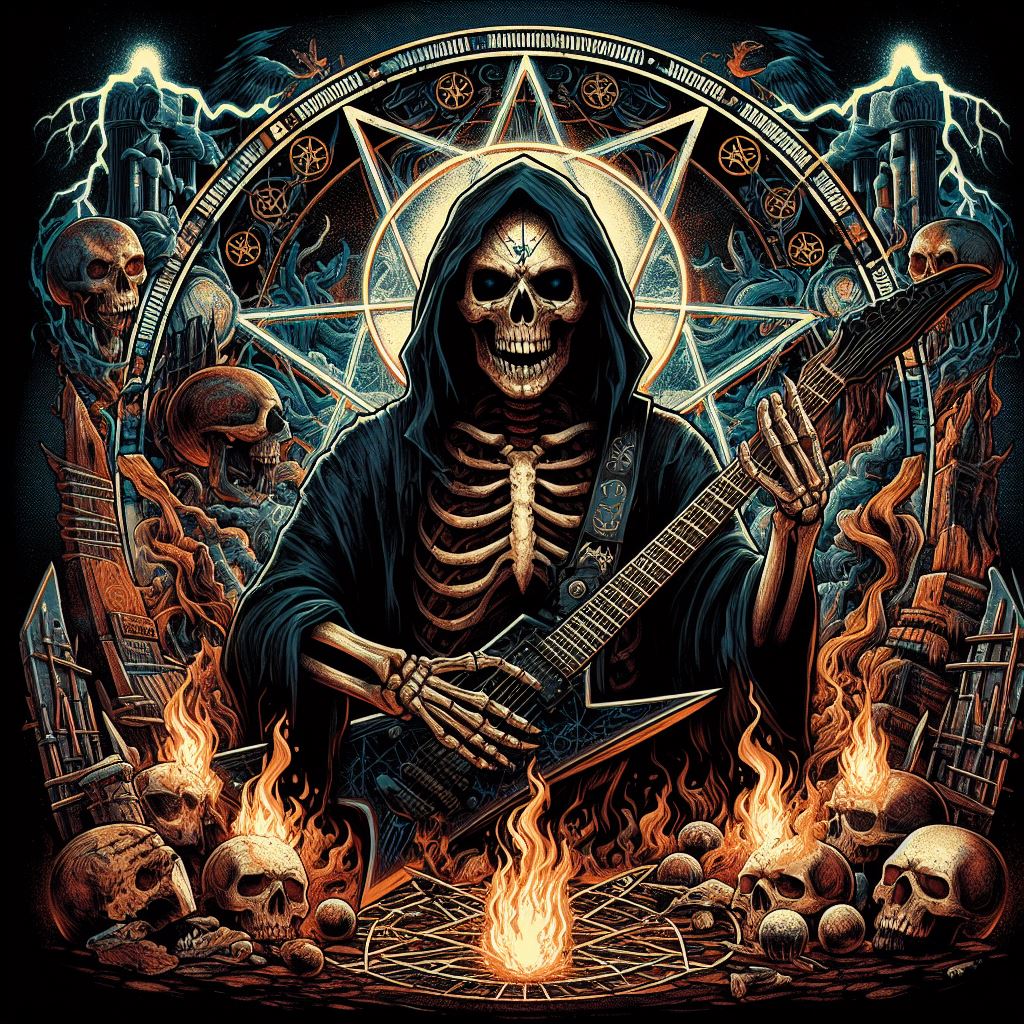Sepultura, meaning “grave” in Portuguese, is a Brazilian heavy metal band that carved a formidable path through the thrash, death, and groove metal scenes. Emerging in the mid-80s, they rose from the streets of Belo Horizonte to become one of metal’s most influential forces. Their story is one of evolution, controversy, and enduring legacy.
Early Days and Death Metal leanings (1984-1986):
The band’s origin story begins in 1984 with brothers Max Cavalera (vocals, guitar) and Igor Cavalera (drums). Fueled by the early sounds of thrash and death metal, Sepultura formed alongside bassist Paulo Jr. and guitarist Jairo Guedes. Their early efforts, captured on the demos “Bestial Devastation” and “Morbid Visions,” were raw and aggressive, leaning heavily towards the burgeoning death metal sound. Tracks like “Warfare” and “The Curse” showcased their technical proficiency and a lyrical focus on violence and social unrest.
Gaining Momentum and Thrash Metal Domination (1987-1993):
With Jairo Guedes departing, Andreas Kisser, a skilled and innovative guitarist, joined the fold in 1987. This new lineup ushered in a period of immense creativity and commercial success. Their album “Schizophrenia” (1987) displayed a shift towards a more thrash-oriented sound, evident in tracks like “Escape to the Void” and “Inquisition Symphony.” This brutality, combined with Andreas’ melodic sensibilities, propelled Sepultura to international recognition.
Signing with Roadrunner Records solidified their global reach. “Beneath The Remains” (1989) cemented their status as thrash metal titans. Songs like “Mass Hypnosis” and the iconic “Troops of Doom” became staples in the genre, showcasing Max’s ferocious vocals and the band’s tight musicianship. “Arise” (1991) continued their ascent with aggressive anthems like “Refuse/Resist” and the blistering title track. Sepultura was at the forefront of the thrash metal movement, sharing stages with Metallica and Slayer.
Experimentation and Groove Metal (1993-1996):
The band’s evolution continued with “Chaos A.D.” (1993). While retaining their thrash roots, Sepultura incorporated groove-oriented elements with slower tempos and a more nuanced approach. Tracks like “Refuse/Resist” and “Territory” became mainstream metal anthems, showcasing their ability to experiment while maintaining their signature aggression.
“Roots” (1996) marked a significant departure. Sepultura embraced their Brazilian heritage, incorporating elements of indigenous and tribal music with their metal sound. The controversial track “Roots Bloody Roots” became a global sensation, albeit dividing some fans who preferred their earlier thrash style.
Internal Tensions and Lineup Shifts (1996-2006):
Despite their commercial peak, tensions arose within the band, particularly regarding the musical direction. In 1996, Max Cavalera left Sepultura, forming Soulfly. Igor remained for another decade, but eventually departed in 2006 to join Cavalera Conspiracy, a band formed with Max.
A New Era for Sepultura (2006-Present):
Sepultura persevered, recruiting vocalist Derrick Green and drummer Eloy Casagrande. While the Cavalera brothers were gone, Sepultura continued to release albums, exploring a more melodic and technical metal sound. Albums like “Dante XXI” (2006) and “Kairos” (2011) showcased their continued evolution and ability to thrive with a new lineup.
Sepultura remains a force in the metal scene. Their most recent album, “Quadra” (2020), reflects their enduring spirit and ability to blend their metallic roots with contemporary influences. With a dedicated fanbase spanning generations, Sepultura’s legacy as one of metal’s most influential bands is undeniable. They continue to tour globally, reminding audiences of their power and the impact they’ve had on the genre.

Leave a Reply
You must be logged in to post a comment.